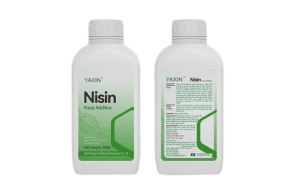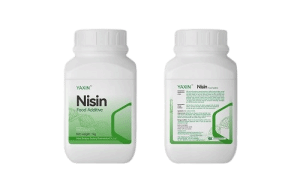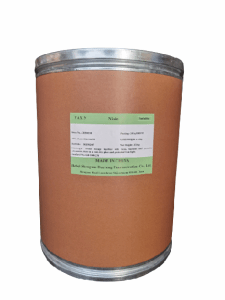
 CONTACT
CONTACT
- Linkman:Linda Yao
- Tel: +8618231198596
- Email:linda.yao@dcpharma.cn
- Linkman:CHARLES.WANG
- Department:Overseas
- Tel: 0086 0311-85537378 0086 0311-85539701
Natamycin Wholesale Price,Antibacterial Effect
TIME:2025-02-28The antibacterial effect of natamycin lactose preparations is affected by various factors, which mainly include the following aspects:
I. Intrinsic Factors
Concentration: Generally, within a certain range, the higher the concentration of the natamycin lactose preparation, the better the antibacterial effect. This is because a higher concentration of natamycin can more effectively bind to the sterols on the microbial cell membrane to form a polyene-sterol complex, increasing the permeability of the cell membrane and causing the leakage of intracellular substances, thereby inhibiting the growth of microorganisms.
Dosage Form: The antibacterial effects of natamycin lactose preparations in different dosage forms may vary. For example, when made into creams, eye drops, oral preparations, etc., due to the different characteristics of the dosage forms, the release rate of the drug at the site of action, the distribution situation, and the way of contact with microorganisms are also different. For instance, the cream dosage form has good adhesion to the skin surface and can continuously release the drug to exert its antibacterial effect; eye drops can directly act on the infected area of the eye and quickly exert their antibacterial effect.
II. Microbial Factors
Species: Different species of microorganisms have different sensitivities to natamycin lactose preparations. Generally speaking, natamycin has a strong inhibitory effect on molds and yeasts, while its inhibitory effect on bacteria is relatively weak. For example, it has a significant inhibitory effect on common molds such as Penicillium and Aspergillus, as well as yeasts such as Candida, but its inhibitory effect on bacteria such as Escherichia coli and Staphylococcus aureus may be poor.
Growth Stage: The growth stage of microorganisms also affects the antibacterial effect. Microorganisms in the logarithmic growth phase have vigorous metabolism and a fast reproduction rate, and are more sensitive to the drug, so the antibacterial effect of the natamycin lactose preparation is relatively good; while microorganisms in the stationary phase or decline phase have slowed metabolic activities, and the structures of the cell membrane and other parts may change, reducing their sensitivity to the drug, and the antibacterial effect may be weakened.
III. Environmental Factors
Temperature: Temperature has an important influence on the antibacterial effect of natamycin lactose preparations. Within a certain temperature range, an appropriate increase in temperature is conducive to the contact and action of the drug with microorganisms, which can enhance the antibacterial effect. However, too high a temperature may lead to the destruction or denaturation of the structure of natamycin, reducing its activity and causing the antibacterial effect to decline. Generally speaking, the temperature range of about 25°C - 30°C is the range where it can exert a better antibacterial effect.
pH Value: The pH value of the environment will affect the stability of natamycin and the properties of the microbial cell membrane. Natamycin has good stability in acidic and neutral environments, and its antibacterial effect is also relatively good; it may be degraded or its structure may be changed in an alkaline environment, thereby reducing the antibacterial effect. Different microorganisms have different tolerance ranges to the pH value. When the environmental pH value is not conducive to the growth of microorganisms, the antibacterial effect of natamycin may be enhanced.
Humidity: A high-humidity environment may promote the growth and reproduction of microorganisms, which to a certain extent weakens the antibacterial effect of natamycin lactose preparations. At the same time, humidity may also affect the distribution and stability of the drug at the site of action. For example, under high-humidity conditions, it may absorb moisture from the air, resulting in a decrease in drug concentration or caking, affecting its antibacterial activity.
IV. Other Factors
Interaction with Other Drugs: When natamycin lactose preparations are used in combination with other drugs, interactions may occur, affecting the antibacterial effect. For example, certain drugs may compete with natamycin for the target of action, or change the permeability of the microbial cell membrane, thereby affecting the entry and action of natamycin.
Light: Long-term exposure to light, especially ultraviolet radiation, may cause a photochemical reaction of natamycin, leading to the destruction of its structure and reducing its antibacterial activity. Therefore, natamycin lactose preparations usually need to be stored away from light to ensure their antibacterial effect.
- Tel:+8618231198596
- Whatsapp:18231198596
- Chat With Skype







